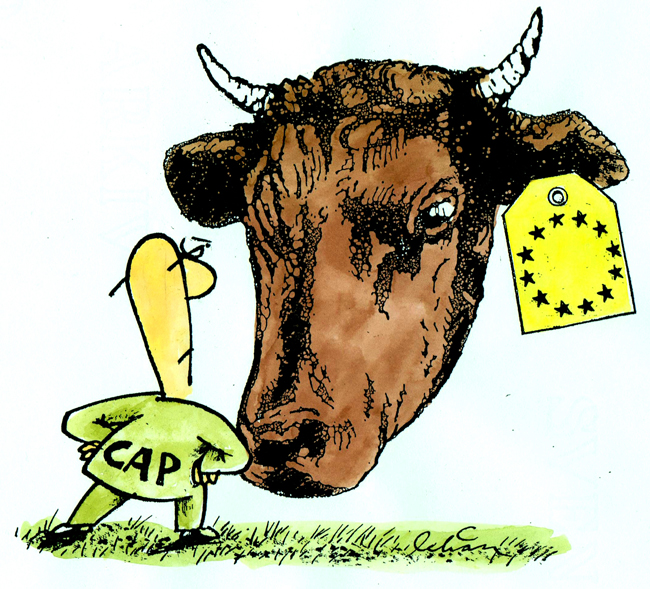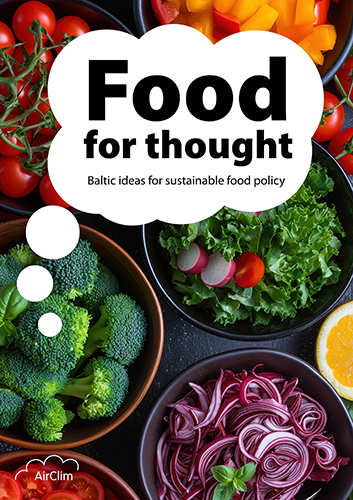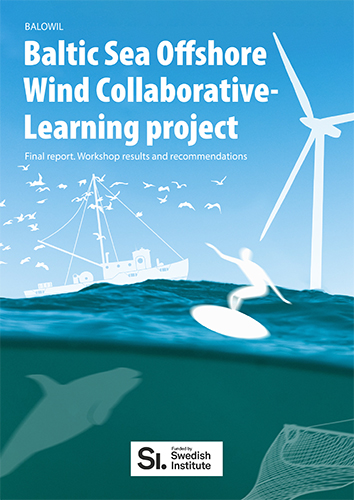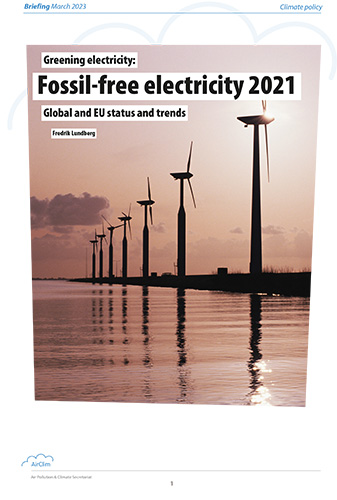

Illustration: © Lars-Erik Håkansson
CAP fails to target emission sources
Greenhouse gas emissions from farming in the EU are on the rise, while the Common Agricultural Policy (CAP) fails to deliver climate action, according to a new “fitness check”.
Out of the seventeen Sustainable Development Goals (SDGs), the CAP has a positive impact on only two of them – “No poverty” and “Zero hunger” – according to the study “Is the CAP Fit for purpose? An evidence-based fitness-check assessment”, which is a review of 450 scientific papers and reports commissioned by BirdLife Europe and the European Environmental Bureau. The SDG “Climate action” is one of the most neglected goals, as reflected by its score of two red minuses – “cannot deliver”.
Since agriculture is not part of the European Emissions Trading Scheme, the CAP is the primary policy instrument for implementing climate policies in the sector. Climate action is one of the areas that has been priority for recent reforms of the CAP and a specific objective for several of the instruments in both pillars. Though there is an ambition to address climate mitigation on paper the CAP fails to deliver on the ground.
Greenhouse gas emissions from agriculture represent around 20 per cent of total EU greenhouse gas emissions, but only about half of these emissions are covered by the “agriculture” category in reports to the UNFCCC. This is because emissions from energy use, land use and land use change and emissions from industrial inputs such as fertilisers are reported under other categories. Animal farming is responsible for about two-thirds of agricultural emissions.
The visible trends in greenhouse gas emissions from agriculture in the EU cannot be attributed to climate action under the CAP. The main explanation is that greenhouse gas emissions closely correlate to the number of cattle. During the 1990s the number of cattle in Eastern Europe shrank due to the economic recession followed by the collapse of communist regimes, and in Western Europe intensification has had a smaller but similar effect on livestock numbers. However, since the abolishment of milk quotas in 2015, the number of cattle has been increasing and so have greenhouse gas emissions.
Nitrous oxide is the other important greenhouse gas for which agriculture is a major source. Emissions come primarily from the reaction of nitrogen in soils with the air and can best be avoided by reducing the levels of applied nitrogen fertilisers. This has to some extent been achieved by the Nitrates Directive, which mainly targets water pollution, but is also the result of cross compliance (rules that farmers must comply with to receive direct payments under the CAP). However, the declining trend since the early 1990s has ceased and in recent years nitrogen fertiliser use has been increasing, contributing to higher nitrous oxide emissions. One of the reviewed studies shows that there is a correlation between nitrogen fertiliser use and direct payments (also see article AN3/17). An example from Ireland shows that through the effective design of a Rural Environmental Protection Scheme (under pillar II) it was possible for suckler beef farms to reduce nitrogen fertiliser use by 49 per cent with only small productivity decreases.
Two of the greening measures under pillar I, crop diversification and ecological focus areas, have the potential to increase the use of nitrogen-fixing crops, which in turn leads to a reduced need for nitrogen fertilisers and thus reduced emissions of nitrous oxide. In one Italian study, using a modelling approach, this was shown to reduce greenhouse gas emissions by 1–2 per cent. The effect of these measures is quite marginal since most EU farmers comply with them without any extra efforts.
Another source for both methane and nitrous oxide emissions is manure. This can be limited through improved storage and management, and is supposed to be an easier apple to pick than limiting methane emissions from enteric fermentation. For large pork and poultry farms this is regulated under the Industrial Emissions Directive, but there is no EU-wide legislation for cattle farms and smaller farms. On examining the crude statistics there is no sign that there have been any significant improvements in manure management. Although there was a 24 per cent reduction in methane emissions from this source between 1990 and 2011 this can be entirely explained by the change in herd size.
Some of the biggest emissions from land use come from the cultivation of organic soils. This largely involves drained peatlands that have been cultivated, where the high fraction of organic material breaks down and carbon dioxide is emitted. Flooding them with water again is one way to stop this process. Since 2004, the CAP does not provide any direct payments for this climate-relevant measure. Pillar II payments for turning drained organic soils back into wetland are available under certain circumstances. There is a lot of potential for improvement, since organic soils represent only a fraction of the arable land in the EU, but a quite significant part of the land-use greenhouse gas emissions.
Even if the CAP fails to mitigate direct emissions from farming in Europe, there is at least some kind of awareness of the problem and the first attempts to tackle it. Indirect greenhouse gas emissions outside the EU on the other hand fall completely outside the CAP radar. These are mainly caused by the import of soy and other feedstocks from Latin America, causing land-use change and other environmental problems. It is difficult to estimate the exact impact, but there are estimates that feedstock production outside Europe contributes between 9 and 33 percent of the EU’s livestock emissions.
The authors conclude that even though climate has become a common word in the CAP discourse, without any radical changes its main impact on greenhouse gas emissions in the future will continue to be unintentional effects of measures targeting other objectives such as the abolishment of the milk quotas. However, if legislators are serious about climate action they need to design policy instruments that deal with main sources of greenhouse gas emissions: livestock numbers, nitrogen fertiliser use, manure management, organic soils and feedstock imports.
Kajsa Pira
Source: “Is the CAP Fit for purpose?” An evidence-based fitness-check assessment, commissioned by BirdLife Europe and the European Environmental Bureau
http://eeb.org/wp-admin/admin-ajax.php?juwpfisadmin=false&action=wpfd&ta...
Climate in the common agricultural policyClimate was first highlighted as one of the priorities for agricultural and land management payments under the rural development policy in the CAP in 2007. In the health check in 2008/2009 it was addressed further and climate was one of five priorities that received additional funding. Since 2014, climate action has been one of three cross-cutting priorities for the whole CAP. There is also a commitment under the Multiannual Financial Framework (MFF) for the period 2014–2020 to devote at least 20 per cent of the Union budget to support for climate change objectives. CAP is divided into two pillars. The first pillar consists of direct payments to farmers, and 30 per cent of these payments are conditional on three “greening” measures: crop diversification, ecological focus areas (EFAs) and permanent grasslands. In the second pillar, there are more measures that explicitly target climate action, as well as a great deal of flexibility for member states on how and what measures to implement. Member states design their own Rural Development Programmes (RDPs) on the basis of a given framework, and the results vary considerably. |

 Download this issue
Download this issue































